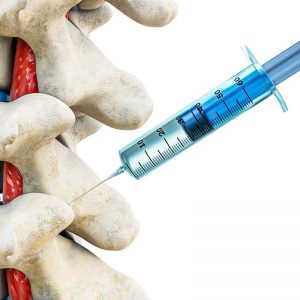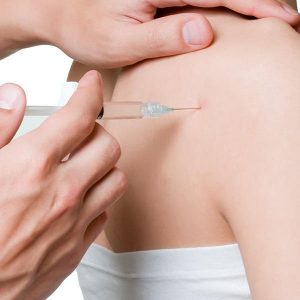
Joint injections are those containing medications that treat joint pain in a temporary manner. There are several different types of joint injections available to patients saddled by significant pain. As an example, platelet-rich plasma injections, often referred to as PRP injections, reuse the patient’s blood to boost the body’s healing process. To be more specific, these injections catalyze healing of the tissues and cartilage within joints.
Corticosteroid injections use anesthetics and steroid medications to decrease inflammation with the overarching goal of reducing pain. Placental tissue matrix injections, also referred to as PTM injections, relieve pain with placental tissue obtained after the healthy birth of a baby. Mothers sometimes donate the placenta after birthing a baby so the placental tissue’s amniotic regenerative cells can serve the purpose of reducing inflammation and promote healing.
Hyaluronic acid injections are most commonly injected into the knees. Such injections are used after corticosteroid injections fail to relieve pain. Hyaluronic acid serves the same purpose as the body’s naturally occurring substance that lubricates joints. The injection of more hyaluronic acid into a body site such as the knees makes it that much easier to lubricate joints and promote optimal functionality.
There is no reason to fear joint injections. This procedure typically takes between half an hour and an hour after the recovery and observation period are factored in. Joint injections occur with the use of X-ray imaging. The patient is provided with medication through an IV to promote relaxation. It is at this point that the doctor has the patient lie down on the X-ray table so the topical anesthetic can be applied to the skin at the body site where the injection will occur.
The injection contains a contrast dye that facilitates an accurate and precise injection. Though there is the potential for the injected body site to swell or slightly bleed, such complications are unlikely.
Joint injections in the knees, shoulders or hips reduce pain, improve flexibility and ultimately make it that much easier to life an active and fulfilling life. Patients who receive such injections can return to their regular activities a single day after the procedure.
There is the potential for it to take a full week for patients to experience meaningful pain relief after an injection. Pain relief stemming from joint injections along with physical therapy highlighted by exercises and stretches reduces pain and bolsters mobility for upwards of several months.


If you have pain or limited mobility in your knees, hips or shoulders, it is in your interest to meet with our doctors to determine if joint injections are the optimal treatment modality. Joint injections treat pain related to degenerative arthritis, tendonitis, osteoarthritis, stress from body mechanic issues and injuries.
Though few know it, joint injections also serve the purpose of identifying the underlying cause of a patient’s pain. As an example, if the injection of an anesthetic into the patient’s hip joint results in a significant reduction of pain in his or her leg, it is a sign that the area is the hip as opposed to the knee, thigh, shin, torso or other body site.
If you think you might be a candidate for Joint Injections, then please schedule a consultation with one of our pain management doctors today. You can call our clinic at (972) 316-7270 or our Denton office at (940) 222-8943 to schedule an appointment.